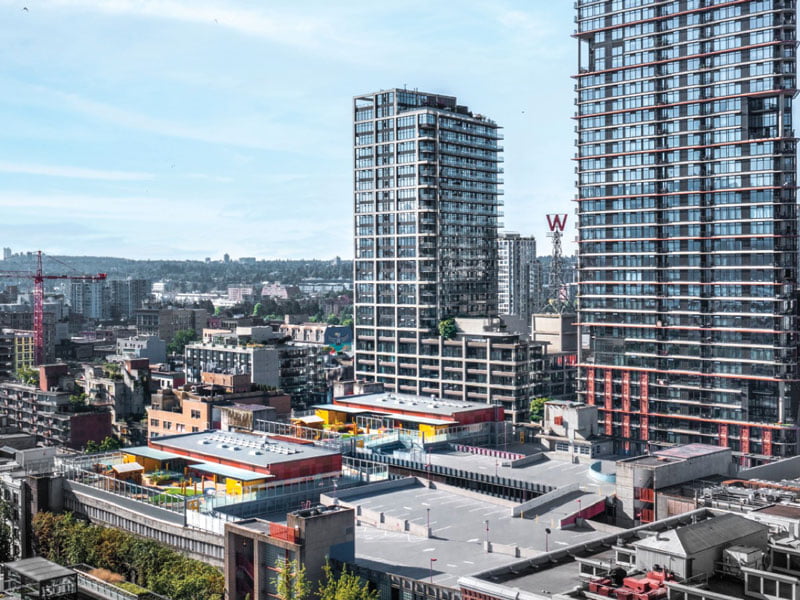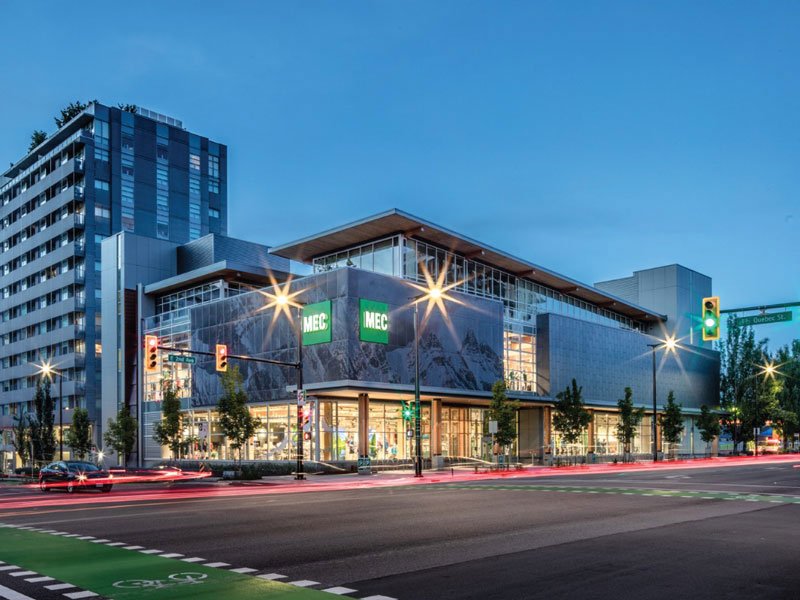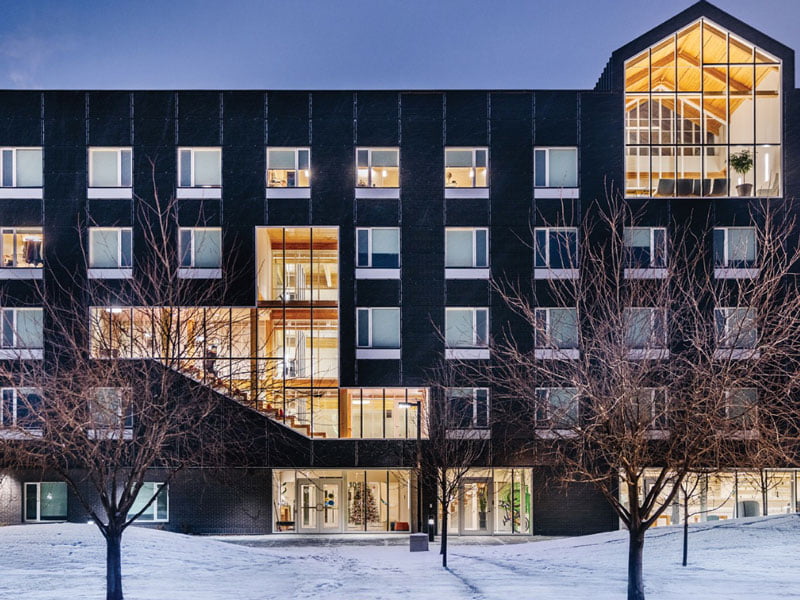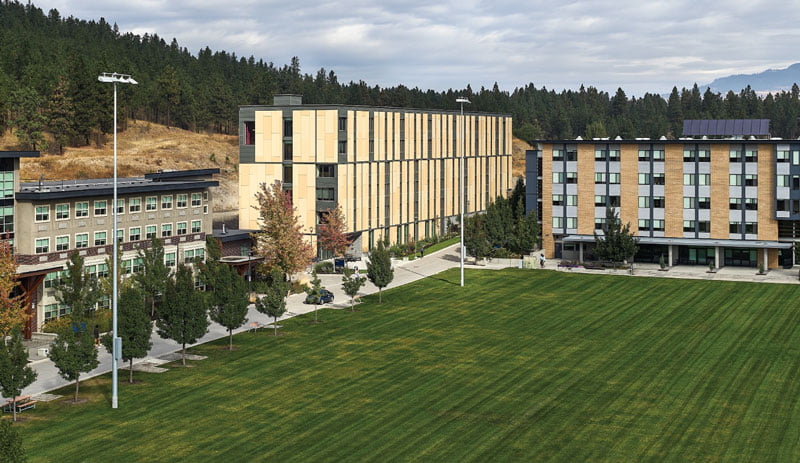
Vancouver, BC
Institutional (small) Award
Jury Comment: This simple and elegant project is an innovative response to the acute shortage of childcare spaces in a city experiencing rapid densification. It seems fitting that the expansive roof of an underused downtown parkade should be repurposed to serve the needs of urban families.
The Gastown Child Care Centre is a creative response to an intriguing City of Vancouver initiative to develop child care centres on the roofs of under-utilized parkades located in the downtown core. This innovative solution features two 400m² prefabricated, 37-seat, Passive House and LEED Gold-certified child care facilities to serve the immediate needs of the local community.
The design solution focused on net-zero energy and low carbon fuel sources, as well as specifications that prioritized materials and products with Environmental Product Declarations, Healthy Building Declarations and transparent sourcing.
To optimize efficiency, economy, and repeatability, various elements of the two buildings, including the canopy, support plinth, enclosure, and outdoor play are virtually identical prefabricated components. A raised construction crane located in an alley between the two parkades allowed vehicles to pass below while prefabricated glulam structures, insulated wood cassettes, and outdoor play area components were lifted to the top of the parkades for assembly.
An elevated large-span steel platform allows surface rainwater to flow into the existing drainage system and the new structural loads are efficiently transferred to the parkade structure to avoid the need for costly seismic upgrades.
Oriented toward Burrard Inlet, with spectacular views of the North Shore Mountains, the rusty red-hued buildings, bright yellow storage sheds, bold and colourful outdoor play areas, and a multi-coloured tricycle court provide a variety of opportunities for imaginative play. An open-air bridge spans the alley between the parking structures, connecting the two child care buildings and making them one facility.
The north elevations of both child care buildings have triple-glazed windows and sliding doors by Cascadia Windows & Doors, offering large views, ample daylight and direct access to an outdoor play area, sheltered by a translucent glazed canopy.
Project Credits
- Owner/Developer City of Vancouver
- Architect Acton Ostry Architects Inc
- General contractor Heatherbrae Builders
- Landscape Architect Durante Kreuk
- Electrical/mechanical engineer The Integral Group
- Structural engineer Fast + Epp
- Passive House Consultant Ryder Architecture
- Commissioning Agent C.E.S. Engineering Ltd
- Acoustic consultant RWDI
- LEED Consultant Stantec LEED
- Special Consultant Environmental Solutions
- Code Certified Professional GHL Consultants
- Photos Michael Elkan Architectural Photography
Project Performance
- Energy intensity (building and process energy) = 65.4 KWhr/m²/year
- Energy intensity reduction relative to reference building under NECB 2011 = 68%
- Water consumption from municipal sources = 4,357 litres/occupant/year
- Reduction in water consumption relative to reference building under LEED = 26%
- Construction waste diverted from landfill = 65%
SUBSCRIBE TO THE DIGITAL OR PRINT ISSUE OF SABMAGAZINE FOR THE FULL VERSION OF THIS ARTICLE.




